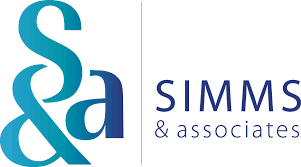Hello Everyone,
In my previous blogs, I explored the incredible power of diversity and inclusion in driving business success, innovation, and development. I also emphasised the significance of giving female leadership a platform to promote equality. As I continue this journey, I find it fitting to shed light on another critical aspect of the workplace – International Equal Pay Day, observed on September 18th each year. This day serves as a reminder of the persistent gender wage gap and the urgent need to address it. In this blog, I will address the importance of equal pay, how it can help bridge the gap in the workforce and delve into the psychological aspects that play a role in perpetuating this gap.
Understanding the Gender Wage Gap
The gender wage gap remains a prevalent issue in workplaces worldwide. Despite significant progress in advocating for gender equality, women continue to earn less than their male counterparts in many industries and positions. The wage gap is not only a matter of unequal pay for the same work but also reflective of the systemic biases and barriers that hinder women’s career advancement and professional growth. Factors such as occupational segregation, lack of representation in leadership roles, and unconscious biases all contribute to perpetuating this gap.
The Psychological Aspects of the Gender Pay Gap
In addition to the structural and systemic factors contributing to the gender pay gap, there are also psychological aspects at play that influence women’s earnings. One noteworthy phenomenon is the confidence gap between genders. Studies have shown that women often underestimate their abilities and qualifications, while men are shown to have a tendency to overestimate them. This can manifest in several ways within the workplace:
Negotiation Skills
Women are less likely to negotiate their starting salaries or ask for raises than men. This can result from a lack of confidence in their worth or a fear of being perceived as too assertive. In contrast, men may be more willing to assertively negotiate for higher pay.
Imposter Syndrome
Many women experience imposter syndrome, a psychological pattern where they doubt their accomplishments and have an internalised fear of being exposed as a fraud. This can lead them to undervalue their contributions and accept lower compensation.
Perceived Competence
Research has shown that both men and women tend to perceive men as more competent in leadership roles, even when their qualifications are similar. This perception can impact hiring and promotion decisions, leading to disparities in pay and representation in leadership positions.
Cultural and Societal Influences
Societal norms and cultural expectations can play a significant role in women’s confidence levels. Stereotypes about gender roles and career aspirations can lead women to doubt their capabilities in traditionally male-dominated fields, impacting their willingness to pursue higher-paying positions.
While addressing these psychological aspects is challenging, promoting a workplace culture that encourages confidence-building, mentorship, and support for women can help mitigate these issues. Offering negotiation training and mentorship programs specifically designed for women can boost their confidence and empower them to advocate for fair compensation.
The Impact of Equal Pay on Workforce Dynamics
Now, let’s revisit the impact of equal pay on workforce dynamics:
Attracting and Retaining Talent
Offering equal pay for equal work is a powerful tool for attracting and retaining diverse talent. As I prioritise fairness in compensation, I signal my commitment to creating an inclusive work environment. This helps me attract top-notch professionals and encourages them to stay and contribute their best efforts to our company’s success.
Fostering Diversity and Inclusion
Equal pay is a crucial step in fostering diversity and inclusion. When I ensure that all employees are valued and compensated fairly, regardless of gender, race, or any other characteristic, it creates a more inclusive culture where everyone can thrive. Such an environment encourages individuals from diverse backgrounds to bring their unique perspectives, ideas, and experiences to the table, fostering innovation and creativity.
Narrowing the Leadership Gap
Equal pay is pivotal in bridging the leadership gap between men and women. By empowering female employees with better financial prospects and growth opportunities, I can help break down the barriers that have traditionally held women back from reaching leadership positions.
Boosting Economic Growth
A more equitable workforce translates into a stronger economy. When women are compensated fairly, they are more likely to invest in education, healthcare, and their families.
As a result, economic growth is bolstered, and communities prosper. Additionally, research shows that companies with diverse leadership teams tend to perform better financially, thus amplifying the positive effects on the overall economy.
Promoting Equal Pay Practices
To bridge the workforce gap and foster a fair and inclusive society, I recognise the importance of taking proactive steps toward promoting equal pay practices:
- Conduct Pay Audit: Commit to regularly reviewing and analysing pay structures to identify and rectify any discrepancies.
- Build Pay Tier Structure: Establish clear pay tiers within your organisation, ensuring employees are compensated appropriately based on their roles and responsibilities. This tiered structure promotes fairness and consistency in compensation.
- Implement Diverse Hiring Practices: Ensure diverse representation in the hiring process to overcome biases and promote equal opportunities.
- Provide Equal Growth Opportunities: Create mentorship and leadership development programs that cater to all employees’ career aspirations.
On International Equal Pay Day, I am reminded of the imperative to eliminate the gender wage gap and promote equal pay practices. By embracing the principles of fairness and inclusion, we can harness the full potential of our diverse workforce. Equal pay bridges the workforce gap and paves the way for a more equitable and prosperous future for all. As I continue to champion diversity, inclusion, and gender equality, I will join hands with others to build a world where everyone has an equal opportunity to thrive and contribute to the betterment of society.
Love,
Amanda
